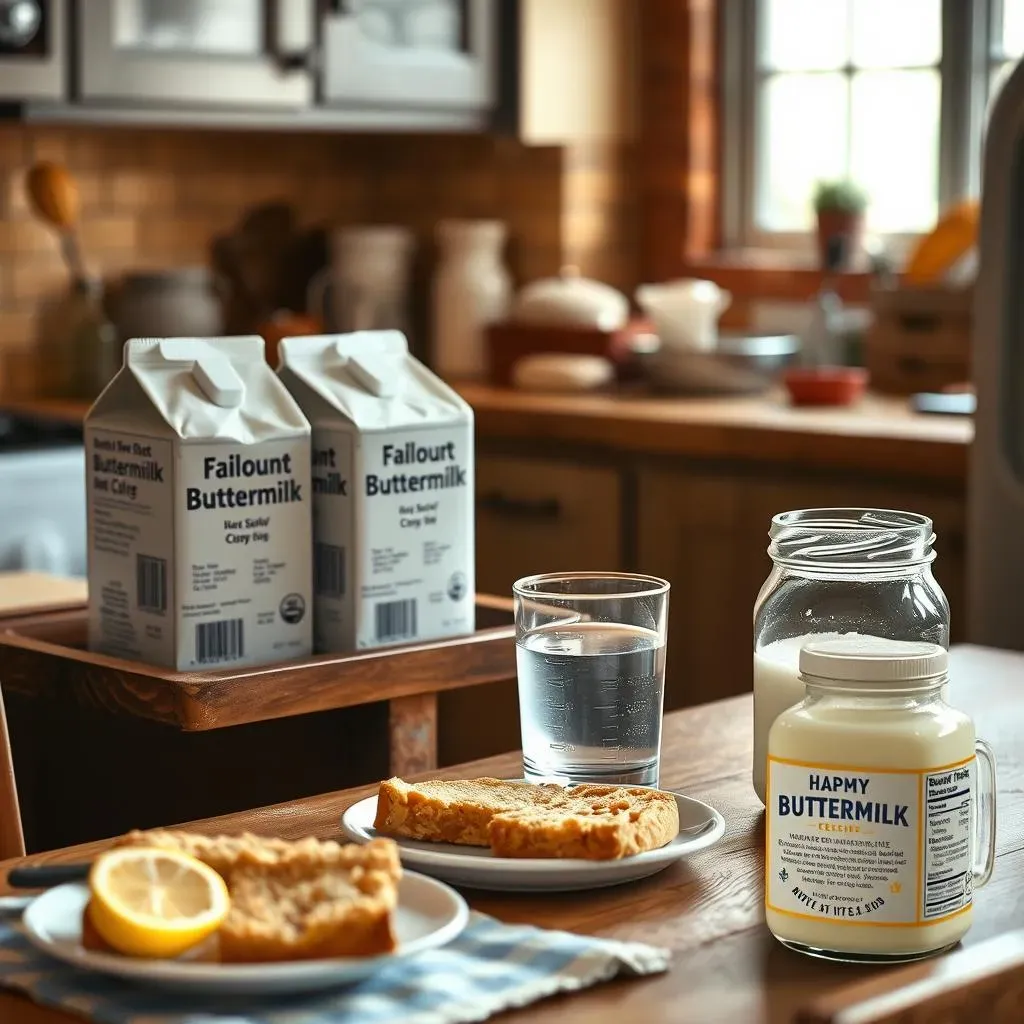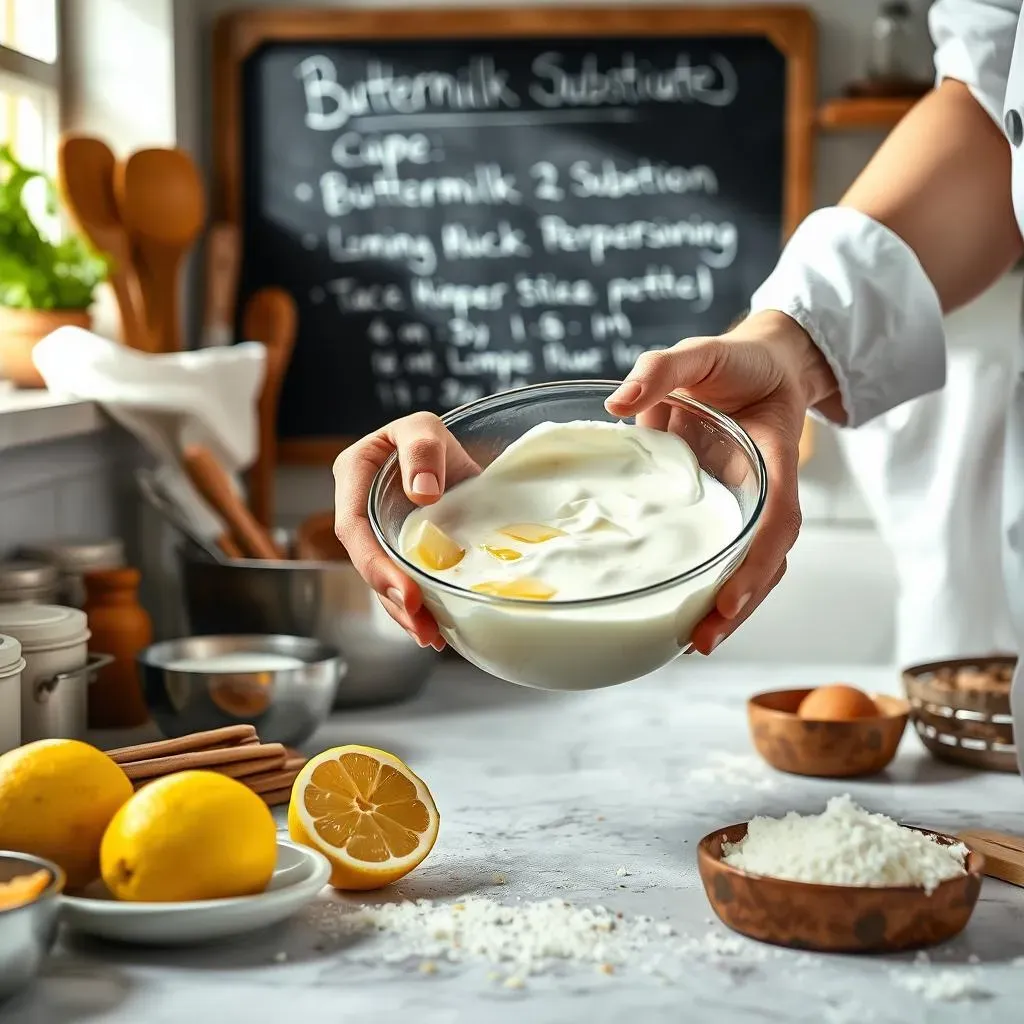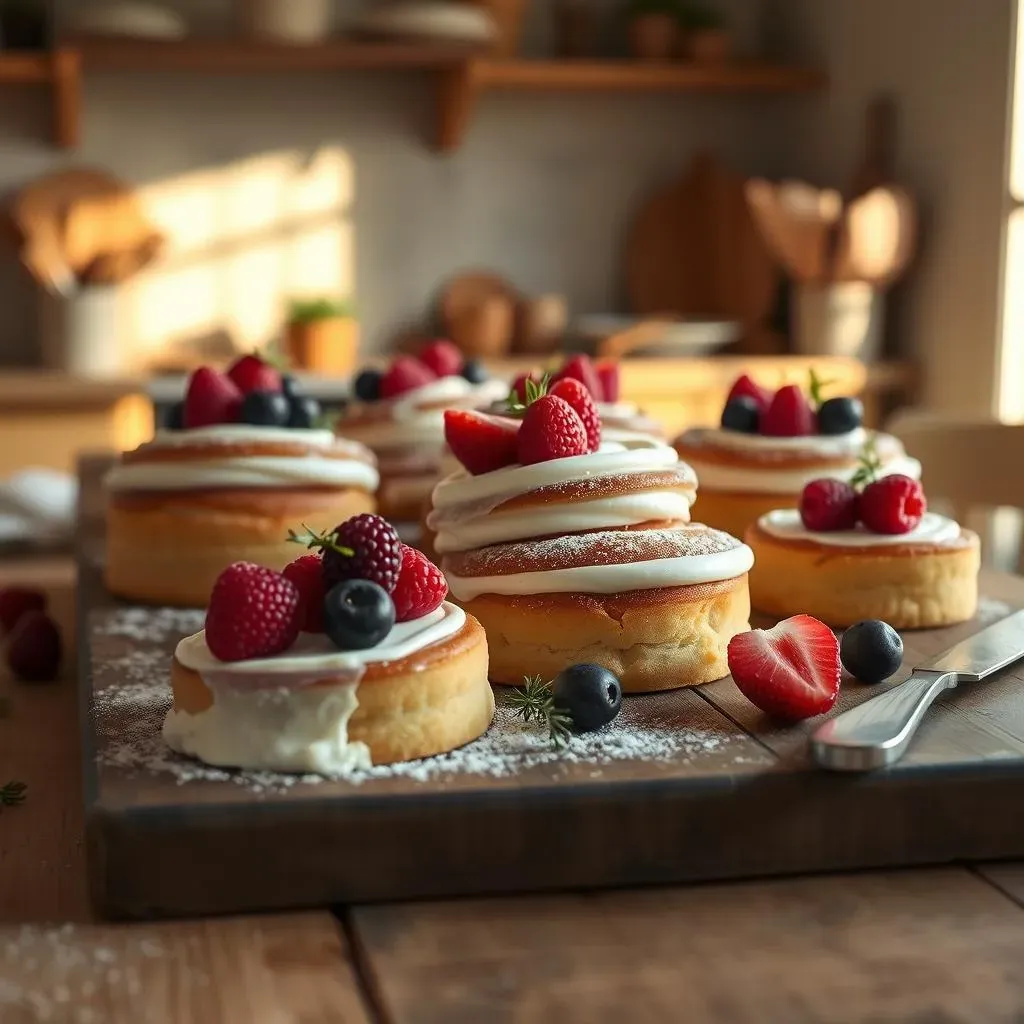Table of Contents
Ever found yourself mid-recipe, ready to bake something amazing, only to discover you’re completely out of buttermilk? It's a baking bummer, I know! But don't fret, because there's a kitchen superhero hiding in your fridge: sour cream. Yes, you heard me right! This article is your guide on how to substitute buttermilk with sour cream, a trick that can save your baking day. We'll explore why this substitution works, the simple steps to achieve the right consistency, and crucial tips to make sure your cakes, pancakes, and other treats come out just perfect. Forget those frantic trips to the store; let's unlock the secret of using sour cream as a buttermilk stand-in and make your baking life a whole lot easier and delicious. Get ready to learn the easy way to keep baking, even when buttermilk is nowhere in sight!
Why You Might Need a Buttermilk Substitute

Why You Might Need a Buttermilk Substitute
The Case of the Missing Buttermilk
Let's face it, buttermilk isn't exactly a staple in every fridge. It's one of those ingredients that often lurks in the back of the store, rarely making it onto our regular shopping lists. You might be happily browsing a new recipe for fluffy pancakes or a decadent cake, only to be stopped in your tracks by that dreaded word: buttermilk. It’s like the universe is testing your baking commitment. Maybe you used the last of it for that amazing fried chicken last week, or perhaps you just never buy it because it's not something you use very often. Whatever the reason, running out of buttermilk can feel like a major setback when you're in the mood to bake.
Buttermilk, despite its name, isn't actually butter. It's the liquid left over after churning butter, and it has a unique tangy flavor and a slightly thick texture. This makes it a star ingredient in many recipes. It adds a subtle zing to baked goods, tenderizes proteins, and helps create a light and airy crumb. Think about those super fluffy pancakes or that moist cake; buttermilk is often the secret ingredient. So, when you find yourself without it, you need a trusty substitute that can mimic its magic. That’s where our friend, sour cream, comes in.
Reason | Why it happens |
|---|---|
Not a regular item | Buttermilk isn't commonly used in everyday cooking |
Used it all | You might have used the last of it in a previous recipe |
Forgot to buy | It's easy to overlook buttermilk on a shopping list |
Beyond the Basics: Buttermilk's Baking Powers
It’s not just about the flavor, though that tang is pretty amazing. Buttermilk also has a lower pH level than regular milk, which means it's more acidic. This acidity reacts with baking soda, helping your baked goods rise beautifully, creating those light and airy textures we all crave. It’s like a mini science experiment happening in your oven. Furthermore, the proteins in buttermilk help to tenderize gluten, which is super important for a soft and moist finished product. This is why buttermilk is so beloved in the world of baking. It is not just a liquid; it's a texture and flavor enhancer.
Now, you might be wondering, "Can't I just use regular milk?" Well, you could, but you won't get the same results. Regular milk lacks that acidity and the unique texture that buttermilk brings. This is why finding a good substitute is essential for those times when buttermilk is MIA. So, when you reach for that container of sour cream, remember you're not just replacing a liquid; you’re replacing a key component that makes your baking dreams come true. And that’s pretty cool, if you ask me.
How to Substitute Buttermilk with Sour Cream

How to Substitute Buttermilk with Sour Cream
The Sour Cream Solution
Alright, so you're staring at your recipe, buttermilk-less, and wondering what to do? Don't panic! Sour cream is here to save the day. It has a similar tanginess and a lovely thick texture, which makes it a great stand-in for buttermilk. The key to using sour cream as a substitute is to thin it out a bit. We need to mimic the consistency of buttermilk, which is much more liquid than sour cream. Think of it as transforming your sour cream into a buttermilk doppelganger. It's a simple process, and once you get the hang of it, you’ll be doing it like a pro.
We are not just slapping some sour cream in there and hoping for the best. We need to take a little bit of care with our substitution. The goal is to get that similar acidity and consistency that buttermilk provides. I know it might sound like a lot of work, but trust me, it’s easier than running to the store. Let's get into the nitty-gritty of how to make it happen. You'll be amazed at how simple it is once you know the trick.
The Magic Ratio
The most common method is to mix sour cream with either milk or water. For every one cup of buttermilk that your recipe calls for, you'll want to use about ¾ cup of sour cream. Then, you’ll add ¼ cup of milk or water to thin it out. Whisk it all together until it’s smooth. This mixing helps to achieve a similar consistency to buttermilk. It's like giving your sour cream a little makeover, making it more liquid, and ready to play the part of buttermilk in your recipe. Don’t worry if it’s not perfectly identical; it’s the taste and the texture we are aiming for.
Now, some people swear by using milk, while others prefer water. Honestly, I've used both and they both work great. If you're using whole milk, you might get a slightly richer result, but if you're using water, it'll be a bit lighter. It really comes down to your personal preference and what you have on hand. The important thing is to get that sour cream thinned out so it can do its buttermilk job. This is where you get to play a little bit and see what works best for you.
Buttermilk | Sour Cream | Milk or Water |
|---|---|---|
1 Cup | 3/4 Cup | 1/4 Cup |
The Acidity Boost
One thing to keep in mind is that sour cream is not quite as acidic as buttermilk. To help mimic that, you can add a little bit of lemon juice or vinegar to your sour cream mixture. Just a teaspoon or two will do the trick. This extra acidity will help with the leavening process, making your baked goods rise beautifully. It's like giving your substitute a little extra oomph, ensuring it performs just as well as the real deal. Think of it as a little secret weapon in your baking arsenal.
So, there you have it! Substituting buttermilk with sour cream is not rocket science. With a few simple steps, you can easily make your own buttermilk substitute and continue baking without any hiccups. Remember the ratio, thin it out with milk or water, and add a touch of acidity. You'll be amazed at how well it works, and you'll never have to let a missing ingredient stop you from baking again. Happy baking, and may all your cakes be moist and fluffy!
Tips for Perfect Baking with Sour Cream as Buttermilk Substitute

Tips for Perfect Baking with Sour Cream as Buttermilk Substitute
Adjusting for Different Recipes
Okay, so you've got your sour cream buttermilk substitute ready, but here’s the thing: not all recipes are created equal. Some recipes might be more sensitive to changes in liquid content or acidity, so it's good to be a little flexible. If you’re making something like a delicate cake, you might want to be a bit more precise with your measurements. Start with the basic ratio, but don't be afraid to adjust slightly if needed. If the batter seems too thick, add a tiny bit more milk or water. If it seems too thin, maybe a tad more sour cream. It's all about finding that sweet spot where your batter looks just right.
Also, consider the type of sour cream you're using. Full-fat sour cream will give you a richer result, while low-fat sour cream will be a bit lighter. Both work fine, but it's worth keeping in mind how it might affect your final product. It’s like being a scientist in your kitchen, experimenting and making observations until you get that perfect outcome. Don't be afraid to trust your instincts and make small tweaks as you go. Baking is all about learning and adapting, and that’s what makes it so fun.
Recipe Type | Adjustment Tips |
|---|---|
Cakes | Be precise with measurements, adjust liquid slowly |
Pancakes | Adjust liquid for desired batter consistency |
Muffins | Use full fat for extra richness |
The Temperature Factor
Another thing to consider is the temperature of your ingredients. Ideally, you want your sour cream and milk or water to be at room temperature. This helps them mix together more smoothly and incorporate into your batter evenly. Using cold ingredients can sometimes lead to a lumpy batter, and nobody wants that. So, take a moment to let your sour cream and milk sit out for a bit before you start mixing. It's a small step, but it can make a big difference in the final texture of your baked goods. It's like giving your ingredients a chance to relax and get ready for their baking adventure.
Think about it like this: if you are trying to mix cold butter into flour, it’s going to be tough and clumpy. But if the butter is softened, it will mix in smoothly. The same principle applies to your sour cream and milk. Room temperature ingredients help everything come together more easily. It might seem like a small detail, but it’s the little things that can really elevate your baking game. So, remember to let those ingredients warm up a bit, and you’ll be well on your way to a perfectly baked treat.
Taste as You Go
This might sound obvious, but it's super important: always taste your batter or dough before baking. It's the best way to make sure you’re happy with the flavor and that the acidity is just right. If you think it needs a little extra tang, add another tiny splash of lemon juice or vinegar. If it seems too tangy, maybe a pinch of sugar. It’s like having a sneak peek at the final product and making adjustments before it's too late. You're the chef of your kitchen, so don't be afraid to taste and adjust as you see fit.
Baking is a combination of science and art. It’s about understanding the basic principles and then adding your own personal touch. So, remember those tips, trust your instincts, and don't be afraid to experiment. And most importantly, have fun with it! Baking is supposed to be enjoyable, so relax, get creative, and make some delicious treats with your trusty sour cream buttermilk substitute. Now go bake something amazing!